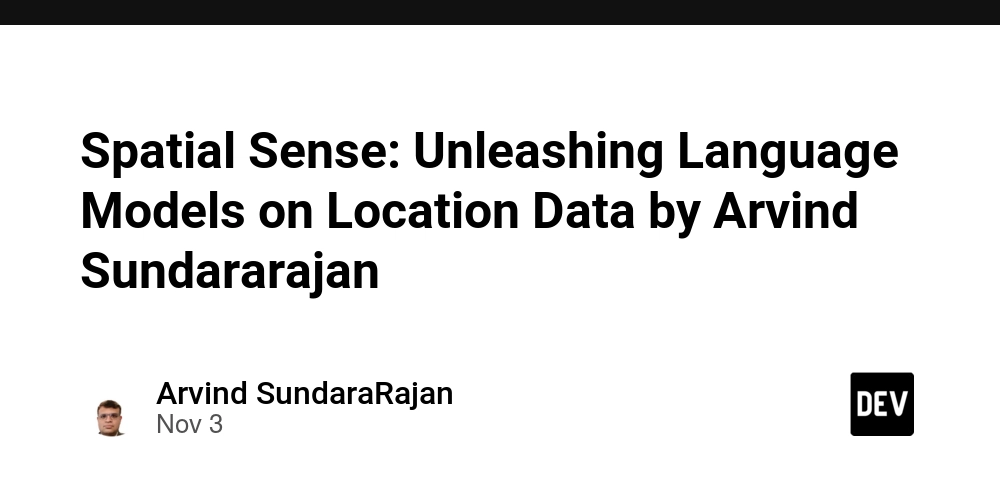
Spatial Sense: Unleashing Language Models on Location Data by Arvind Sundararajan
Ever struggled to extract meaningful insights from seemingly chaotic spatial data? Imagine trying to predict traffic patterns, analyze urban sprawl, or understand complex environmental interactions. Traditional approaches often require extensive domain expertise and custom algorithms.
Here’s a mind-bending concept: what if we could leverage the power of language models, typically used for text, to understand spatial relationships? The key lies in something called causal masking. Instead of treating spatial data as a strictly sequential stream (like text), we can selectively mask portions of the data during training, forcing the model to predict the masked values based on the surrounding context. Even without sequential ordering, the model learns inherent spatial dependencies.
Think of it like showing someone a partially obscured painting. They might not see every detail, but they can still infer the overall scene and the relationships between the visible elements. Causal masking lets the model learn spatial “grammar” without explicit sequential information.
This approach unlocks incredible possibilities:
- Simplified Spatial Analysis: Ditch complex geospatial algorithms. Train a language model to understand spatial patterns directly from raw data.
- Improved Prediction: Predict future events based on spatial context. This is great for weather forecasting, resource management, and urban planning.
- Anomaly Detection: Identify unusual spatial patterns that might indicate fraud, pollution, or other anomalies.
- Enhanced Feature Engineering: Automatically discover relevant spatial features for downstream tasks.
- Cross-Domain Learning: Transfer knowledge learned from one spatial dataset to another, even if they represent different phenomena.
- Robustness: The causal masking approach encourages the model to rely less on absolute positioning, leading to more robust out-of-distribution performance.
One implementation challenge is choosing the right masking strategy. A naive approach could mask out too much information, hindering learning. A better strategy involves adaptive masking based on the density or importance of spatial features. Consider experimenting with different masking ratios and patterns to optimize performance.
This approach is a paradigm shift in how we approach spatial data analysis. It paves the way for using sophisticated language model architectures to unlock hidden value in geographic datasets, promising smarter cities, optimized resource management, and a deeper understanding of our world. The implications extend far beyond our current understanding, and further research will illuminate novel and exciting use cases.
Related Keywords: Causal Masking, Spatial Data, Unimodal Language Models, Information Theory, Spatial Reasoning, Geospatial Data, Spatial Analysis, Transformer Networks, Self-Supervised Learning, LLMs, Causal Inference, Data Augmentation, Spatial Embeddings, Geographic Information Systems (GIS), Remote Sensing, Computer Vision, Geostatistics, Location Intelligence, Spatial Pattern Recognition, Time Series Analysis, Explainable AI (XAI), Causal Discovery, Representation Learning, Out-of-Distribution Generalization







